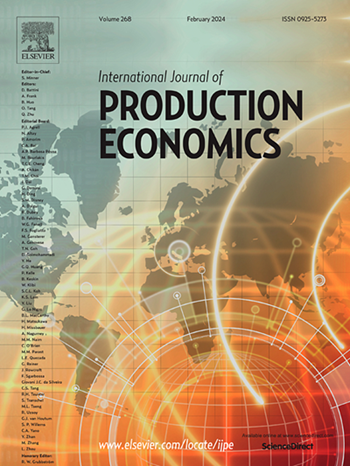领先制造企业实施绿色供应链管理的多因素驱动路径:模糊集定性比较分析
IF 10
1区 工程技术
Q1 ENGINEERING, INDUSTRIAL
引用次数: 0
摘要
环境污染和生态开发日益受到全球的关注。全球供应链上的制造商是最大的污染者之一。绿色供应链管理(GSCM)已成为企业实现可持续生产的重要经营策略。不同行业的公司以不同的方式实施GSCM实践。因此,了解哪些因素影响公司的GSCM以及这些因素如何共同推动公司的绿色行为是很重要的。以前的研究集中在GSCM实践的个体影响上,而一些研究已经检查了多种因素的不同组合如何导致GSCM实践。本研究采用内容分析法和模糊集定性比较分析法(fsQCA)对全球领先制造企业、市场、竞争对手、国家等GSCM的主要驱动因素进行分析(n = 74)。本文运用配置思维和定性比较研究方法,探讨影响大学生GSCM水平差异的多重并发因素和复杂因果机制。这种多重配置揭示了企业在GSCM上的复杂性。最后,讨论了本研究的理论与实践意义、局限性及未来的研究方向。本文章由计算机程序翻译,如有差异,请以英文原文为准。
Multi-factor driving paths of green supply chain management implementation in leading manufacturers: A fuzzy-set qualitative comparative analysis
Environmental pollution and ecological exploitation have increasingly received global attention. Manufacturers in global supply chain are one of the biggest polluters. Green supply chain management (GSCM) has become an important operational strategy for companies to achieve sustainable production. Companies in different sectors implement GSCM practices in different ways. Therefore, it is important to understand which factors affect a company's GSCM and how these factors work together to drive corporate green behavior. Previous studies focused on the individual impact of GSCM practices, while a few studies have examined how different combinations of multiple factors lead to GSCM practices. This study uses content analysis and fuzzy-set qualitative comparative analysis (fsQCA) to analyze the main driving factors, such as the leading global manufacturing companies, market, competitors, and countries, on GSCM (n = 74). We apply configuration thinking and qualitative comparative research methods to explore the multiple concurrent factors and complex causal mechanisms that affect the differences in GSCM levels. The multiple configurations reveal the complexity of companies on GSCM. Finally, we discussed the theoretical and practical implications, limitations, and future research directions.
求助全文
通过发布文献求助,成功后即可免费获取论文全文。
去求助
来源期刊
CiteScore
21.40
自引率
7.50%
发文量
266
审稿时长
52 days
期刊介绍:
The International Journal of Production Economics focuses on the interface between engineering and management. It covers all aspects of manufacturing and process industries, as well as production in general. The journal is interdisciplinary, considering activities throughout the product life cycle and material flow cycle. It aims to disseminate knowledge for improving industrial practice and strengthening the theoretical base for decision making. The journal serves as a forum for exchanging ideas and presenting new developments in theory and application, combining academic standards with practical value for industrial applications.

 求助内容:
求助内容: 应助结果提醒方式:
应助结果提醒方式:


